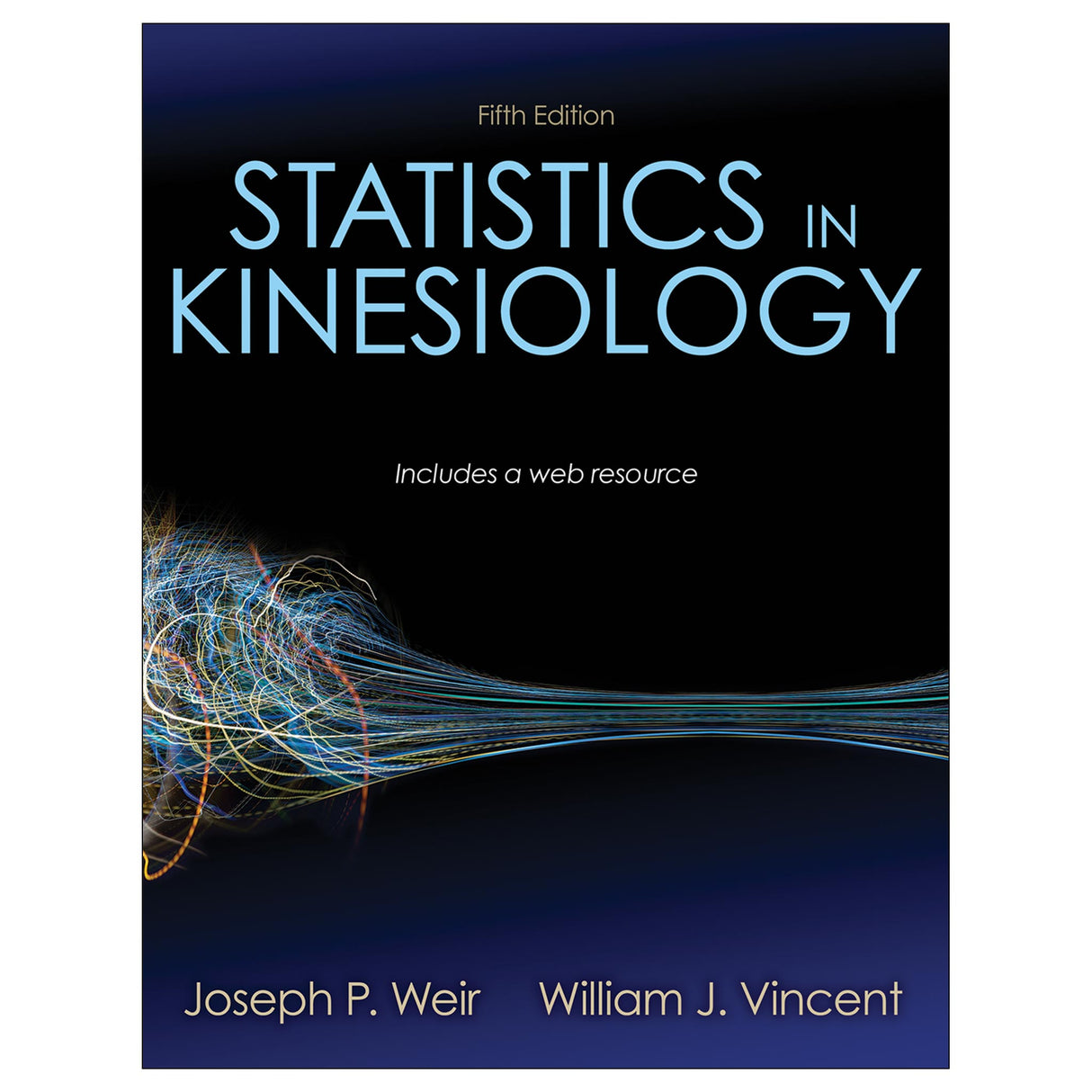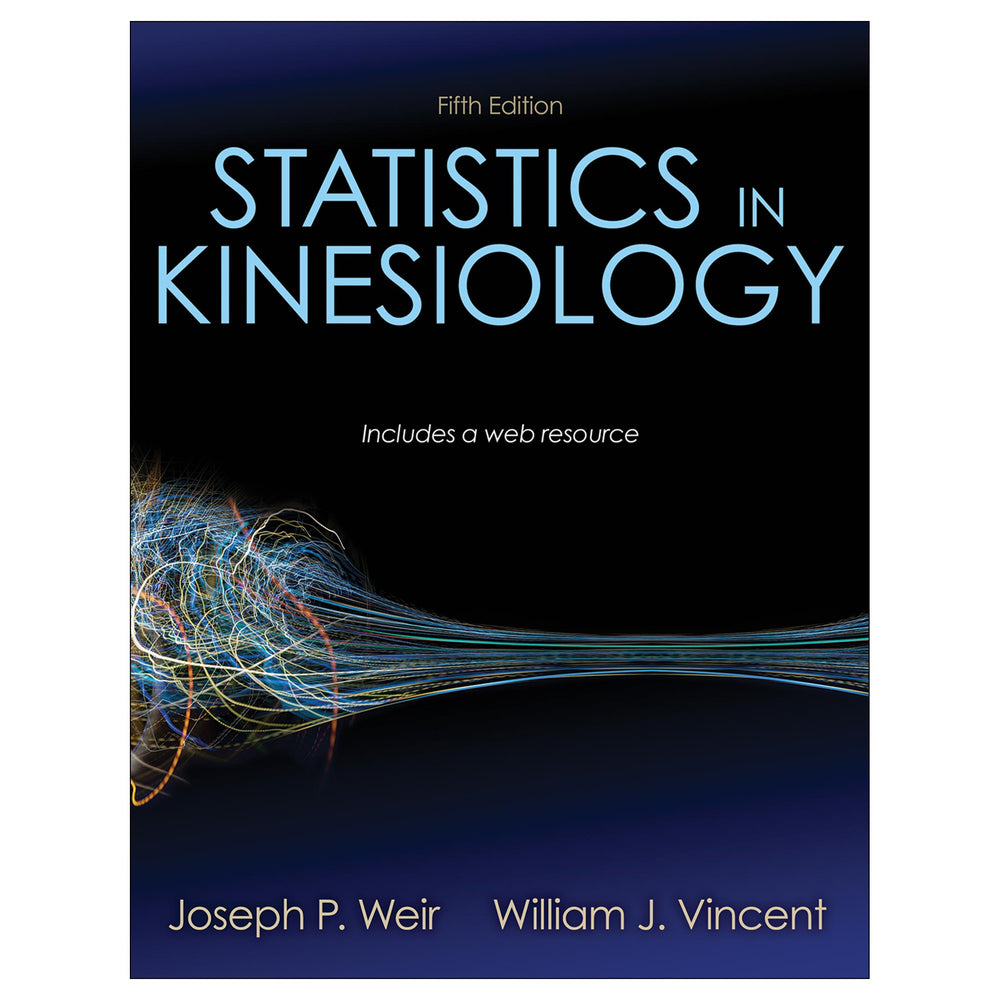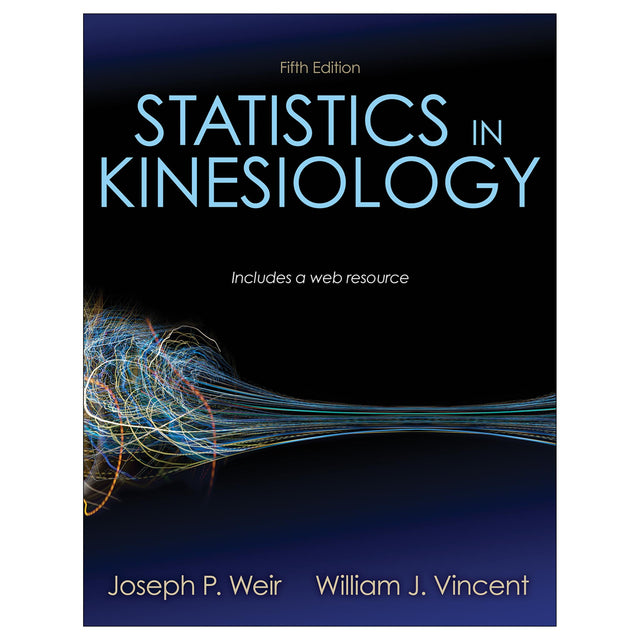Statistics in Kinesiology 5th Edition With Web Resource
Author: Joseph P. Weir, William J. Vincent
$99.95 CAD
As in previous editions, emphasis is placed on methods commonly seen in kinesiology, such as correlation and bivariate regression, t tests, analysis of variance (ANOVA), and the interpretation of interactions in factorial analyses of variance. The fifth edition also incorporates fully updated content reflecting the changing face of kinesiology:
- Comparisons of observational versus experimental research and nonparametric versus parametric methods of analyzing categorical and ordinal data
- More detailed coverage on how to calculate central tendency when data have been transformed (e.g., log transformations) as well as multiple ways to interpret the correlation coefficient
- Expanded coverage of statistical graphs, including dot plots and spaghetti plots
- A discussion of the real meaning of p values and confidence intervals
- An introduction to frequentist approaches versus Bayesian methods
Statistical software tools commonly used in kinesiology applications—such as JASP and G*Power—are briefly introduced, encouraging students to apply their knowledge of statistical procedures to generate and interpret computer results with confidence and ease.
With Statistics in Kinesiology, Fifth Edition, students will gain a solid understanding of the statistical techniques used in physical activity fields. The book’s practical approach, based on the authors’ more than 50 years of combined experience in teaching statistics, will make it easy for students to learn these important, but often intimidating, concepts.
Audience
Textbook undergraduate courses in statistics or measurement in kinesiology and exercise science programs; a reference for professionals in movement sciences.What Is Measurement?
Process of Measurement
Variables and Constants
Research Design and Statistical Analysis
Statistical Inference
Summary
Chapter 2. Organizing and Displaying Data
Organizing Data
Displaying Data
Summary
Chapter 3. Percentiles
Common Percentile Divisions
Calculations Using Percentiles
Summary
Chapter 4. Measures of Central Tendency
Mode
Median
Mean
Relationships Among the Mode, Median, and Mean
Summary
Chapter 5. Measures of Variability
Range
Interquartile Range
Variance
Standard Deviation
Definition Method of Hand Calculations
Calculating Standard Deviation for a Sample
Coefficient of Variation
Standard Deviation and Normal Distribution
Summary
Chapter 6. The Normal Curve
Z Scores
Standard Scores
Probability and Odds
Calculating Skewness and Kurtosis
Summary
Chapter 7. Fundamentals of Statistical Inference
Predicting Population Parameters Using Statistical Inference
Estimating Sampling Error
Levels of Confidence, Confidence Intervals, and Probability of Error
An Example Using Statistical Inference
Statistical Hypothesis Testing
Type I and Type II Error
Degrees of Freedom
Living With Uncertainty
Two- and One-Tailed Tests
Applying Confidence Intervals
Summary
Chapter 8. Correlation and Bivariate Regression
Correlation
Calculating the Correlation Coefficient
Bivariate Regression
Homoscedasticity
Summary
Chapter 9. Multiple Correlation and Multiple Regression
Multiple Correlation
Partial Correlation
Multiple Regression
Summary
Chapter 10. The t Test: Comparing Means From Two Sets of Data
The t Tests
Types of t Tests
Magnitude of the Difference (Size of Effect)
Determining Power and Sample Size
The t Test for Proportions
Summary
Chapter 11. Simple Analysis of Variance: Comparing the Means Among Three or More Sets of Data
Assumptions in ANOVA
Sources of Variance
Calculating F: The Definition Method
Determining the Significance of F
Post Hoc Tests
Magnitude of the Treatment (Size of Effect)
Summary
Chapter 12. Analysis of Variance With Repeated Measures
Assumptions in Repeated Measures ANOVA
Calculating Repeated Measures ANOVA
Correcting for Violations of the Assumption of Sphericity
Post Hoc Tests
Interpreting the Results
An Example From Leisure Studies and Recreation
Summary
Chapter 13. Quantifying Reliability
Intraclass Correlation Coefficient
Standard Error of Measurement
Summary
Chapter 14. Factorial Analysis of Variance
A Between–Between Example
A Between–Within Example
A Within–Within Example
Summary
Chapter 15. Analysis of Covariance
Relationship Between ANOVA and Regression
ANCOVA and Statistical Power
Assumptions in ANCOVA
The Pretest–Posttest Control Group Design
Pairwise Comparisons
Summary
Chapter 16. Analysis of Nonparametric Data
Chi-Square (Single Classification)
Chi-Square (Two or More Classifications)
Rank Order Correlation
Mann-Whitney U Test
Kruskal-Wallis ANOVA for Ranked Data
Friedman’s Two-Way ANOVA by Ranks
Summary
Chapter 17. Clinical Measures of Association
Relative Risk
Odds Ratio
Diagnostic Testing
Summary
Chapter 18. Advanced Statistical Procedures
Multilevel Modeling
Meta-Analysis
Multiple Analysis of Variance
Factor Analysis
Discriminant Analysis
Summary
Appendix: Statistical Tables
Statistical significance and confidence intervals for bivariate regression
What is rank order correlation?
Instructor guide. Includes an introduction and additional lecture aids, tips, and suggested student assignments for each chapter of the book that instructors can use in the classroom. The instructor guide also includes answer keys to the problem sets presented in the web resource.
Test package. Contains 282 questions in true-false and multiple-choice formats.
Presentation package plus image bank. Includes PowerPoint slides of text, artwork, and tables from the book that can be used for class discussion and presentation. The slides in the presentation package can be used directly within PowerPoint or printed for distribution to students. Instructors can easily add, modify, and rearrange the order of the slides.
The companion image bank includes 210 equations as well as 146 tables and figures from the text that may be used for class discussion and demonstration. All items are organized by chapter for ease of reference.
Web resource. Includes problem sets and mini video lectures to further facilitate learning. QR codes in the book direct students to these materials in a quick and easy manner.






